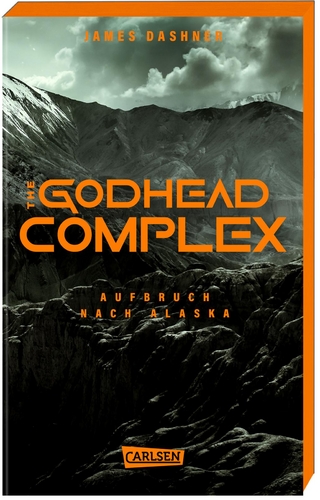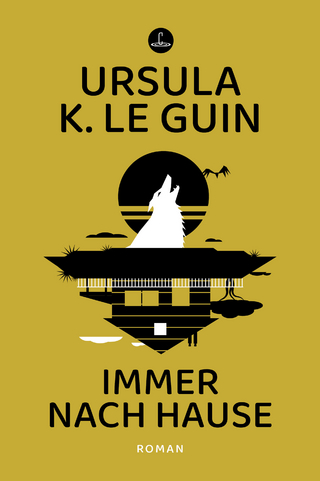
'Voyage to the Moon' and Other Imaginary Lunar Flights of Fancy in Antebellum America
Anthem Press (Verlag)
978-1-78308-740-2 (ISBN)
'Voyage to the Moon' And Other Imaginary Lunar Flights of Fancy in Antebellum America gathers for the first time in a scholarly critical edition four moon voyage stories published by Americans prior to the Civil War. Included in this volume are the works by George Tucker, Edgar Allan Poe, Richard Adams Locke and John Leonard Riddell. Along with a general introduction to the collection as a whole, each story has its own introductory material along with explanatory footnotes and appendixes to help identify the key points of its textual and cultural history.
Paul C. Gutjahr is Ruth Halls Professor of English at Indiana University, US.
List of Figures; Introduction; Acknowledgements; PART I: VOYAGE TO THE MOON: With Some Account of the Manners and Customs, Science and Philosophy, of the People of Morosofia, and other Lunarians (1827) —Joseph Atterley (George Tucker); CHAPTER I: Atterley’s birth and education—He makes a voyage—Founders off the Burman coast—Adventures in that Empire—Meets with a learned Brahmin from Benares; CHAPTER II: The Brahmin’s illness—He reveals an important secret to Atterley—Curious information concerning the Moon—The Glonglims—They plan a voyage to the Moon; CHAPTER III: The Brahmin and Atterley prepare for their voyage— Description of their travelling machine—Incidents of the voyage—The appearance of the earth; Africa; Greece—The Brahmin’s speculations on the different races of men—National character; CHAPTER IV: Continuation of the voyage—View of Europe; Atlantic Ocean; America—Speculations on the future destiny of the United States—Moral reflections—Pacific Ocean—Hypothesis on the origin of the Moon; CHAPTER V: The voyage continued—Second view of Asia—The Brahmin’s speculations concerning India—Increase of the Moon’s attraction—Appearance of the Moon—They land on the Moon; CHAPTER VI: Some account of Morosofia, and its chief city, Alamatua—Singular dresses of the Lunar ladies—Religious self-denial—Glonglim miser and spendthrift; CHAPTER VII: Physical peculiarities of the Moon—Celestial phenomena —Farther description of the Lunarians—National prejudice—Lightness of bodies—The Brahmin carries Atterley to sup with a philosopher—His character and opinions; CHAPTER VIII: A celebrated physician: his ingenious theories in physics: his mechanical inventions—The feather-hunting Glonglim; CHAPTER IX: The fortune-telling philosopher, who inspected the finger nails: his visiters—Another philosopher, who judged of the character by the hair—The fortune-teller duped—Predatory warfare; CHAPTER X: The travellers visit a gentleman farmer, who is a great projector: his breed of cattle: his apparatus for cooking—He is taken dangerously ill; CHAPTER XI: Lunarian physicians: their consultation—While they dispute the patient recovers—The travellers visit the celebrated teacher Lozzi Pozzi; CHAPTER XII: Election of the Numnoonce, or town-constable—Violence of parties—Singular institution of the Syringe Boys—The prize-fighters—Domestic manufactures; CHAPTER XIII: Description of the Happy Valley—The laws, customs, and manners of the Okalbians—Theory of population —Rent—System of government; CHAPTER XIV: Further account of Okalbia—The Field of Roses—Curious superstition concerning that flower—The pleasures of smell traced to association, by a Glonglim philosopher; CHAPTER XV: Atterley goes to the great monthly fair—Its various exhibitions; difficulties—Preparations to leave the Moon—Curiosities procured by Atterley—Regress to the Earth; CHAPTER XVI: The Brahmin gives Atterley a history of his life; CHAPTER XVII: The Brahmin’s story continued—The voyage concluded—Atterley and the Brahmin separate—Atterley arrives in New-York; PART II: “Hans Pfaall––A Tale” (June 1835) by Edgar Allan Poe; PART III: “Great Astronomical Discoveries Lately Made by Sir John Herschel” (August 25-–30, 1835) by Richard Adam Locke; PART IV: “Orrin Lindsay’s Plan of Aerial Navigation” (May 1847) by John Leonard Riddell; Appendix A: Excerpt from Washington Irving’s A History of New York, 1809; Appendix B: Excerpts from “Anonymous Review of A Voyage to the Moon,” reprinted from American Quarterly Review No. 5 (March 1828); Appendix C: “Note” added for inclusion in the “Hans Pfaall” version in Poe’s collection Tales of the Grotesque and Arabesque, 1840; Appendix D: “Richard Adam Locke” in Edgar Allan Poe’s The Literati, 1850; Appendix E: Contemporary Responses to Richard Adam Locke’s “Great Astronomical Discoveries”; Appendix F: P. T. Barnum on Locke’s “Moon Hoax” (1866).
| Erscheinungsdatum | 28.11.2018 |
|---|---|
| Verlagsort | London |
| Sprache | englisch |
| Maße | 153 x 229 mm |
| Gewicht | 454 g |
| Themenwelt | Literatur ► Fantasy / Science Fiction ► Science Fiction |
| ISBN-10 | 1-78308-740-4 / 1783087404 |
| ISBN-13 | 978-1-78308-740-2 / 9781783087402 |
| Zustand | Neuware |
| Haben Sie eine Frage zum Produkt? |
aus dem Bereich


